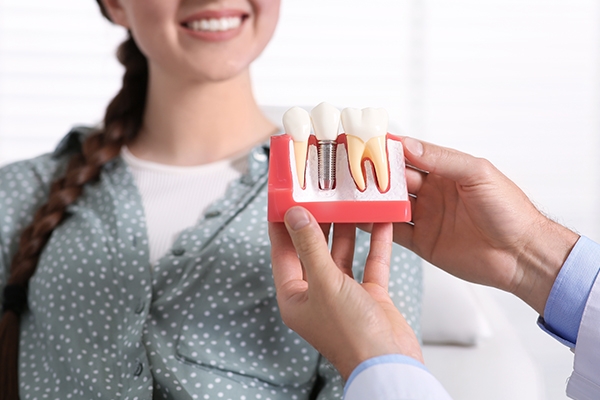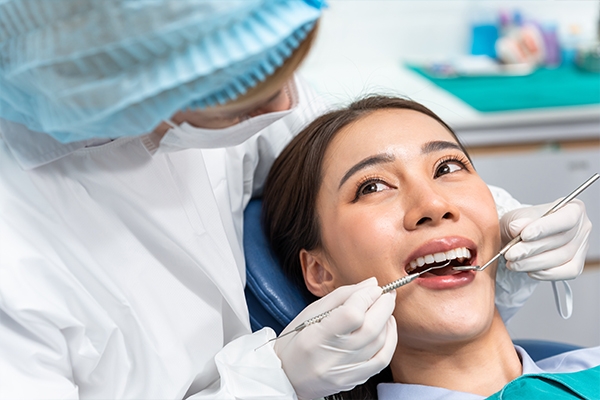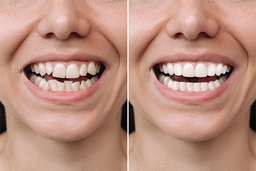From Function to Beauty: Understanding Dental Aesthetics and Prosthodontics

A radiant smile is commonly associated with good health, boosted confidence, and well-being. But dental aesthetics is much more than just enhancing appearance; it involves the balance between functionality and beauty, and how this balance influences a person's life.
Thanks to innovations in prosthodontics, dentistry has shifted from merely addressing functional concerns to also improving the visual appeal of one's smile. This article highlights the significance of aesthetic restoration and how these treatments reshape smiles.
What is prosthodontics?

before-after
Prosthodontics is a dental specialty focused on restoring and replacing missing or damaged teeth. It emphasizes creating prosthetics—like crowns, bridges, dentures, and implants—that not only restore function but also enhance appearance.
Achieving this balance between function and aesthetics requires advanced techniques, materials, and a deep understanding of dentistry.
The role of aesthetics in prosthodontics
Dental aesthetics is an integral part of prosthodontics, focusing on creating natural-looking restorations that blend seamlessly with a patient’s teeth and facial features.
Key principles include:
- Tooth color
Matching the shade of restorations with surrounding teeth to achieve a cohesive look. - Shape and size
Customizing crowns or veneers to align with the natural proportions of the patient’s teeth. - Smile harmony
Ensuring restorations complement the lips, gums, and overall facial symmetry.
Common prosthodontic treatments

1. Crowns and bridges
Crowns cover damaged teeth, restoring their strength, shape, and appearance. They are often used after root canal treatment or for severely decayed teeth.
Bridges fill gaps caused by missing teeth, using adjacent teeth as support.
2. Dental implants
Implants are a permanent solution for tooth loss, involving titanium posts surgically placed in the jawbone. They provide a stable foundation for crowns or bridges.
3. Veneers
Thin shells are placed on the front surface of teeth to correct discoloration, minor misalignment, or gaps. Veneers are an aesthetic solution often used in conjunction with prosthodontics.
4. Dentures
Full or partial dentures are removable appliances designed to replace missing teeth. Modern dentures focus on comfort, fit, and natural appearance.
5. Full-mouth rehabilitation
For patients with extensive dental issues, prosthodontists create comprehensive treatment plans combining multiple restorative procedures.
The process of prosthodontic treatment

Prosthodontic treatments follow a structured process to ensure both functionality and aesthetics:
- Initial consultation and diagnosis
A thorough evaluation of the teeth, gums, and jaw is conducted. Diagnostic tools like X-rays, CT scans, or intraoral imaging are used to assess the condition. - Treatment planning
A personalized plan is created based on the patient’s functional and aesthetic needs. A digital smile design may be used to preview the expected results. - Preparation
Teeth are prepared for restorations, such as reshaping for crowns or taking impressions for dentures. - Fabrication
Restorations are crafted in a dental lab using high-quality materials like porcelain, zirconia, or composite resin. - Placement and adjustment
Prosthetics are fitted and bonded to ensure proper alignment and comfort.
Advantages of prosthodontic treatments
- Improved functionality
Restorations restore chewing and speaking abilities, allowing patients to eat and communicate confidently. - Enhanced aesthetics
Prosthodontic solutions improve smile appearance by addressing discoloration, misalignment, or gaps. - Durability
High-quality materials like zirconia and porcelain offer long-lasting results with proper care. - Boosted confidence
A functional, beautiful smile enhances self-esteem and overall quality of life.
How to maintain prosthodontic restorations

To extend the longevity of prosthodontic work, consider these tips:
- Practice good oral hygiene
Brush and floss daily to prevent plaque buildup around restorations.
- Avoid hard foods
Refrain from biting hard objects that could damage crowns, veneers, or dentures.
- Regular dental visits
Schedule routine check-ups to monitor the condition of restorations.
- Use a mouthguard
Protect restorations from grinding or clenching during sleep.
Are prosthodontic treatments safe?
Prosthodontic procedures are safe when performed by trained professionals. Modern techniques and materials prioritize patient comfort and long-term success.
While some patients may experience minor discomfort during the adjustment phase, these issues are typically temporary and manageable with professional guidance.
Prosthodontics is a transformative field of dentistry that bridges the gap between function and aesthetics. By restoring damaged or missing teeth, it not only improves oral health but also enhances a patient’s smile and confidence.
At GWS Medika, we are dedicated to providing prosthodontic solutions tailored to each patient’s unique needs.
Ready to explore your options for a healthier, more beautiful smile? Visit GWS Medika Permata Hijau Medical Center or GWS Medika Blok M Medical Center to consult the doctors.



